Bezel friends forever: the duo behind the world’s most expensive jewellery watch
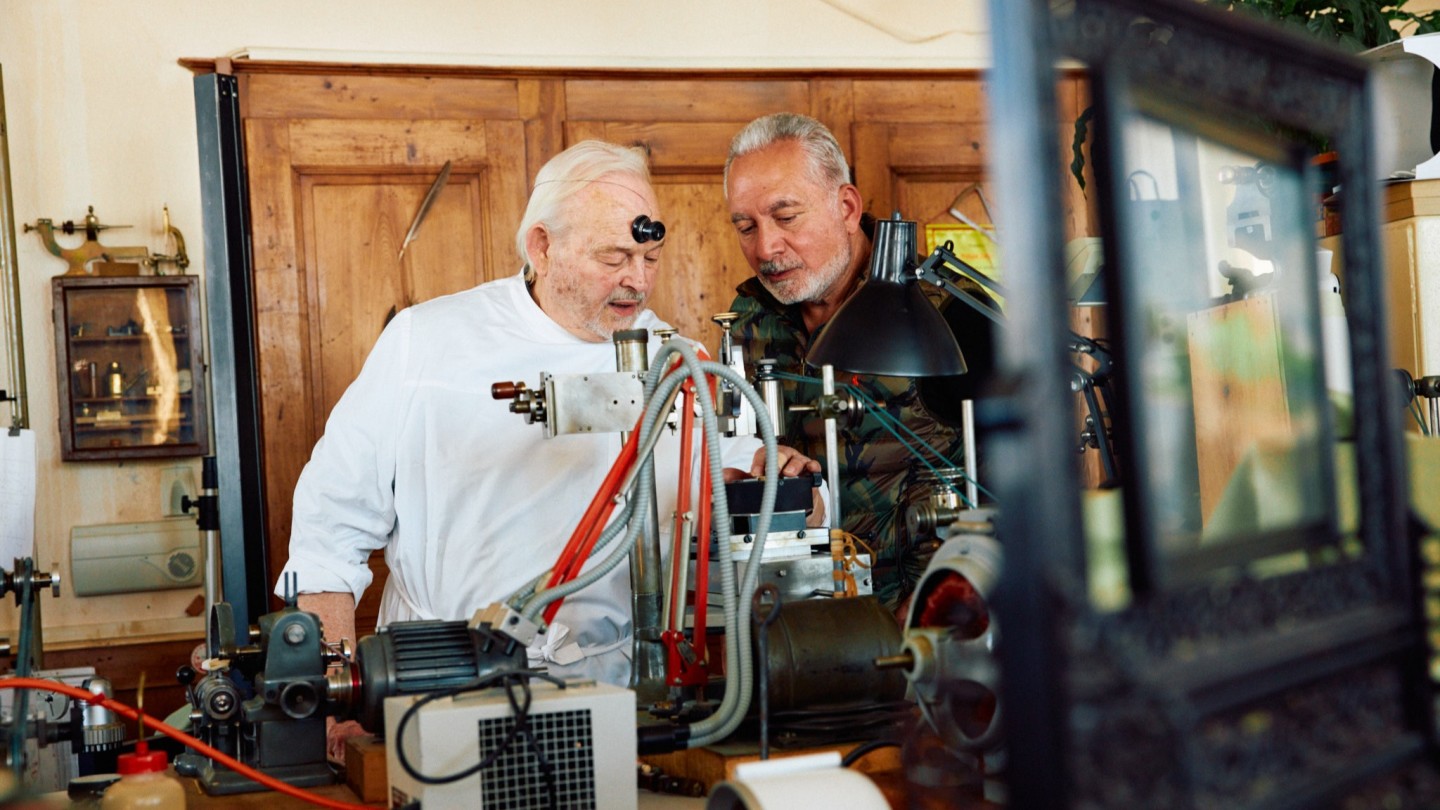
Roula Khalaf, Editor of the FT, selects her favourite stories in this weekly newsletter.
Horological auction records tend to be built on a combination of the following: a long-established brand (usually Patek or Rolex), provenance (Paul Newman, Steve McQueen et al) and complication. So, on the face of it, the SFr200,000 to SFr400,000 (about £162,344 to £324,688) estimate for Lot 206 of a Phillips Geneva watch auction last November was pretty punchy. Neither a Patek nor a Rolex, and never even near a movie star’s wrist, Lot 206 was a 37mm-diameter pink-gold three-hand watch. Bidding opened at about £365,274, rose swiftly to £1m, and eventually the watch hammered at £1.1m – not bad for the 20th-anniversary model of a watch that, until recently, was fetching about £40,586 new, under the disarmingly honest name Simplicity. To be fair, it was not a complete surprise: the name on the dial was that of the watchmaker’s watchmaker, Philippe Dufour. In his smock, smouldering pipe seemingly genetically attached to his lips, he is viewed as a sort of living saint.
Stunning auction price aside, the other revelation of the November auction was the identity of Dufour’s new business partner, the Beirut-based collector Claude Sfeir. Gregarious, ebullient, big-hearted and flamboyant, the 59-year-old son of a Lebanese taxi driver is a refreshingly unpretentious and vividly colourful presence in an increasingly corporate watchscape. His wrists will often boast the rarest prototypes, unique pieces and vintage treasures, and if conversation flags over dinner, he will dig in his pocket and bring out, say, a fancy red diamond of five carats or a Russian Alexandrite of 25 carats that turns blood-red under the fluorescent torch he is never without.

“Claude has beautiful ideas,” says Dufour. “And when he saw this project for the 20th anniversary of Simplicity, he said, ‘Why don’t we put the first watch into auction?’ It was a great idea.” Sfeir agrees emphatically. “The November auction was a lesson for all the watchmakers in the world,” he says, hinting that the sale is just a foretaste for what he and Dufour will unveil later this year.
Today, Dufour is sought out in much the same way as the anchorites of the early Christian church. His farmhouse in the Swiss Vallée de Joux – where he makes on average one watch a month – has become a place of pilgrimage for collectors around the globe. His career began more than 50 years ago at Jaeger-LeCoultre, in 1967. But it was while restoring antique pocket watches in the late ’70s that he considered making his own watches. “So, using old tools, I made my first movement,” he recalls. He could not sell it, but he did receive an order from Audemars Piguet for five Grande Sonnerie minute-repeater pocket watch movements. “Five watches was five years of work, because it took me 2,000 hours to make a watch.”
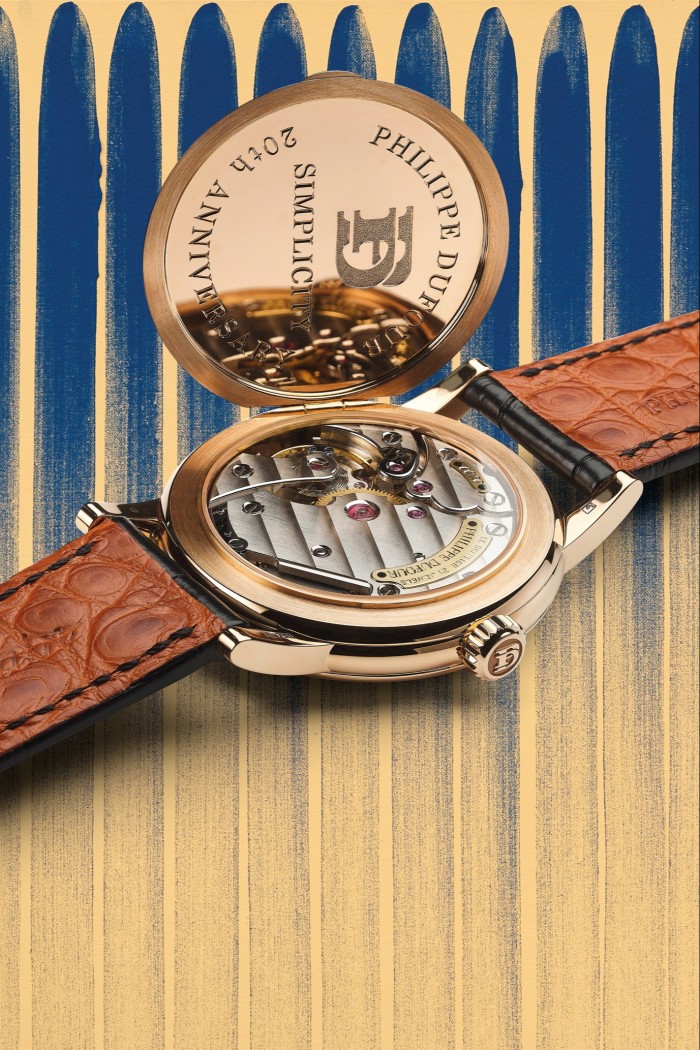
In the mid-’80s, Dufour decided to make his own wrist watches. His twin escapement Duality of 1996 established his reputation, and his grande sonnerie of 1992 secured it. “I survived and I was free – that was the most important thing. And in the year 2000 I made my first Simplicity. Then little by little, because the market was changing and also because of the help of the internet, knowledge began to spread. My watches are recognised today,” he says, taking a puff on his pipe, “but it took many years.”
Sfeir’s horological journey began in Dubai’s gold souk in 1979, where he learned to work on watches – with a hammer. Gold prices were at an all-time high and Sfeir was breaking up watches for their scrap value. He destroyed so many that he can still remember the weights of the movements and straps he used to discard. “We would buy from customers during the day, then at night I had to break them up, melt them and sell the next day to get more money to buy more watches,” he says.
“One day, just before I was closing, a Japanese man saw that I had a white-gold Rolex with a light-blue Stella dial. He said, ‘This one, how much?’ I wanted him to go away. I asked for a crazy price: 10,000AED (about $2,700). I was paying $560 for these watches and $100 more if they had a diamond bezel.” The man took out 10,000 – in dollars rather than dirhams – and put it on the table. “That night I started thinking how crazy I was breaking all these watches. So every day I kept at least six watches back.”
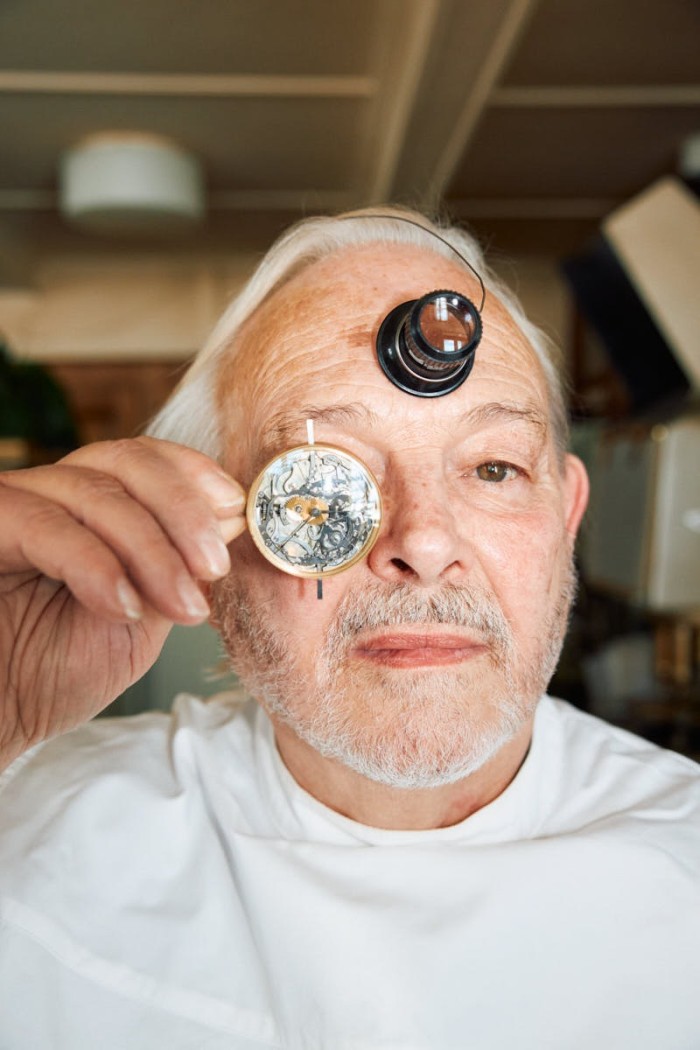
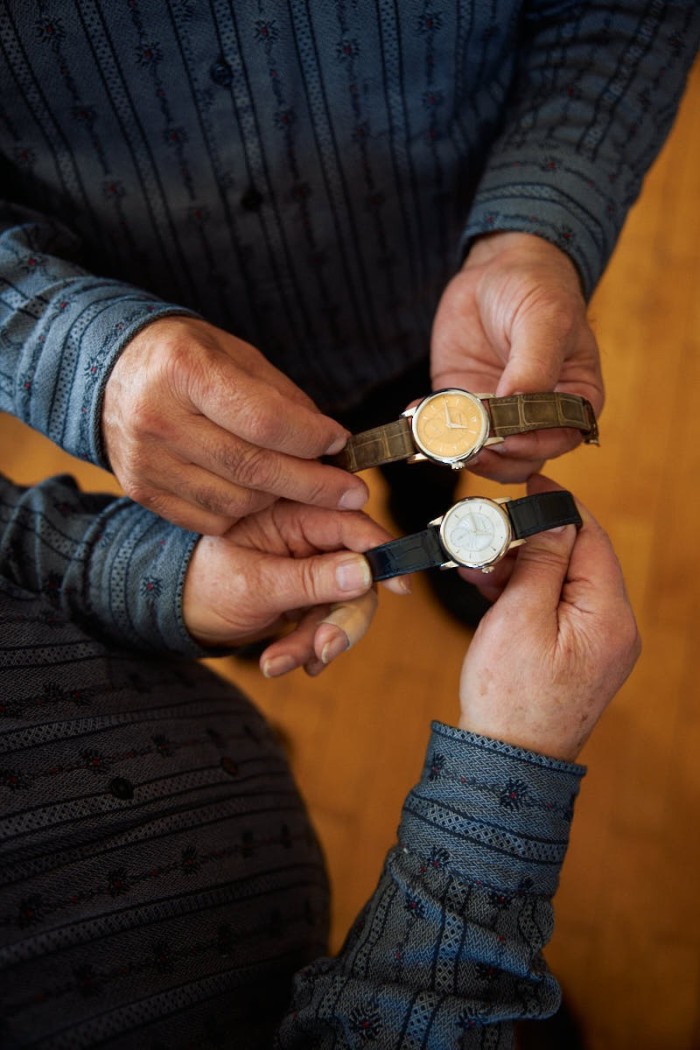
It was the beginning of a career remarkable even by the standards of the Persian Gulf at a time of explosive growth. But when his partners started buying skyscrapers in Dubai towards the end of the 2000s, Sfeir had a premonition that the gravy train was about to be derailed. “I was not happy,” he says. “My hair went completely white in two years.” His partners bought him out in 2007.
Looking for a quieter life, Sfeir decided to focus on his watch collection. “I have never sold a single watch from my collection in 41 years. I have given some as presents but otherwise I have kept everything – even the mistakes… fake Paul Newmans especially,” he laughs. Sfeir began spending more time in Switzerland where he became friends with Dufour, visiting auctions and watch fairs. At one memorable Baselworld, the pair spotted a jewellery watch. “It was more than $50m retail, set with 110 carats but a small watch, about one centimetre in diameter, quartz,” he says. “Philippe and I started laughing. We went back to the hotel, had a little drink and decided to do something crazy.” That was the moment they agreed to make the world’s most expensive jewellery watch – a watch as important as the stones.
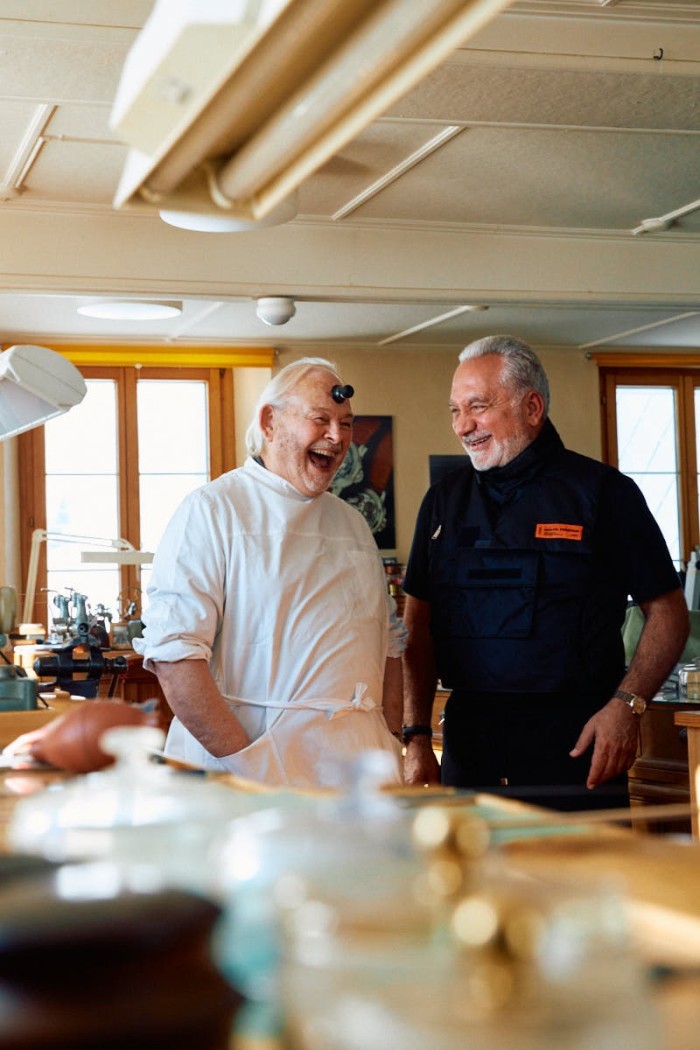
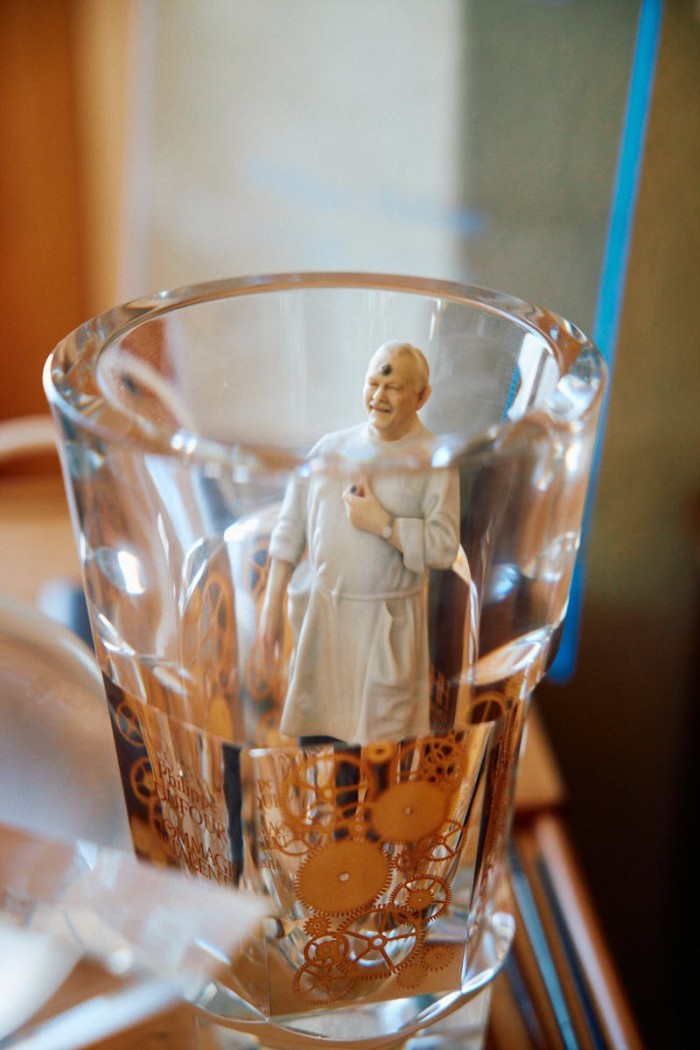
Also at the bar that day was London tattoo artist Mo Coppoletta. “Mo started to do sketches. He came to see me twice in Beirut, and went to the Vallée to see Philippe too. We met at hotels many times to see many, many sketches,” Sfeir says. Colour abounds thanks to a collection of stones assembled over 40 years, and including something called a chameleon diamond – a 10-plus carat stone that gives the project its name.
The more designs they pondered, the more ambitious the project became, with the addition of a necklace, earrings, bracelet, ring – even multiple buckles should the owner choose to dress it down on a leather strap. All in all, it consumed around half a kilo of platinum and pink gold and 366 carats of stones, ranging in size from the almost invisible 0.03 to 13.5 carats. “We have made six pieces, but the main thing is the watch. You can wear it as a bracelet, on a leather strap, and as a pendant,” Dufour says. “It is a 34mm Simplicity in platinum. But we’ve played a little bit with the dial, using coloured diamonds for the indices.”
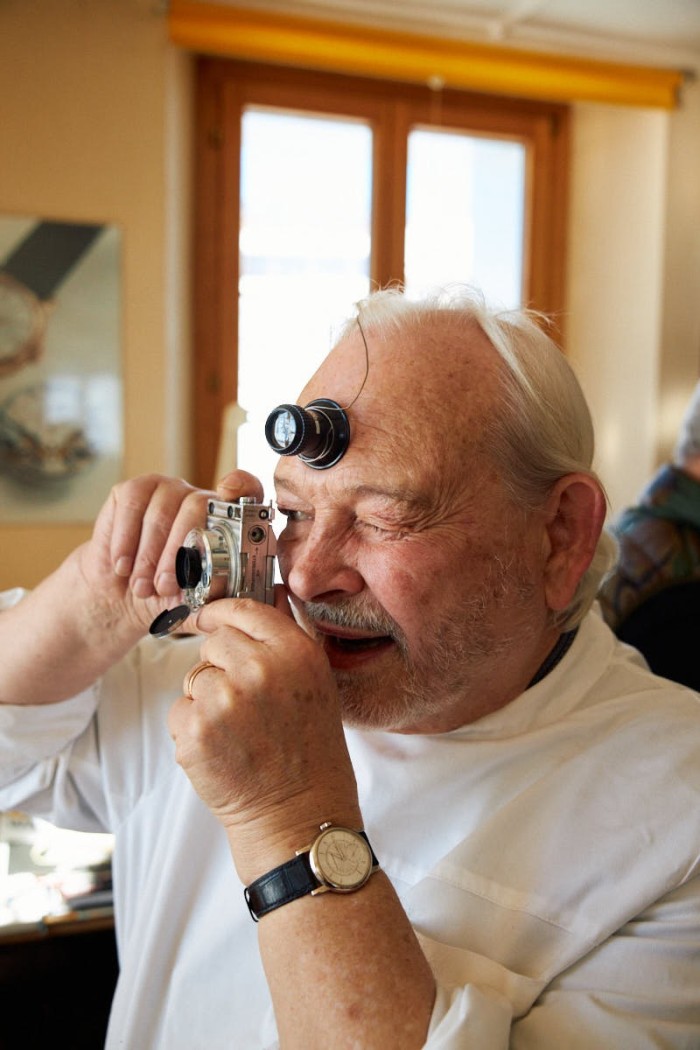
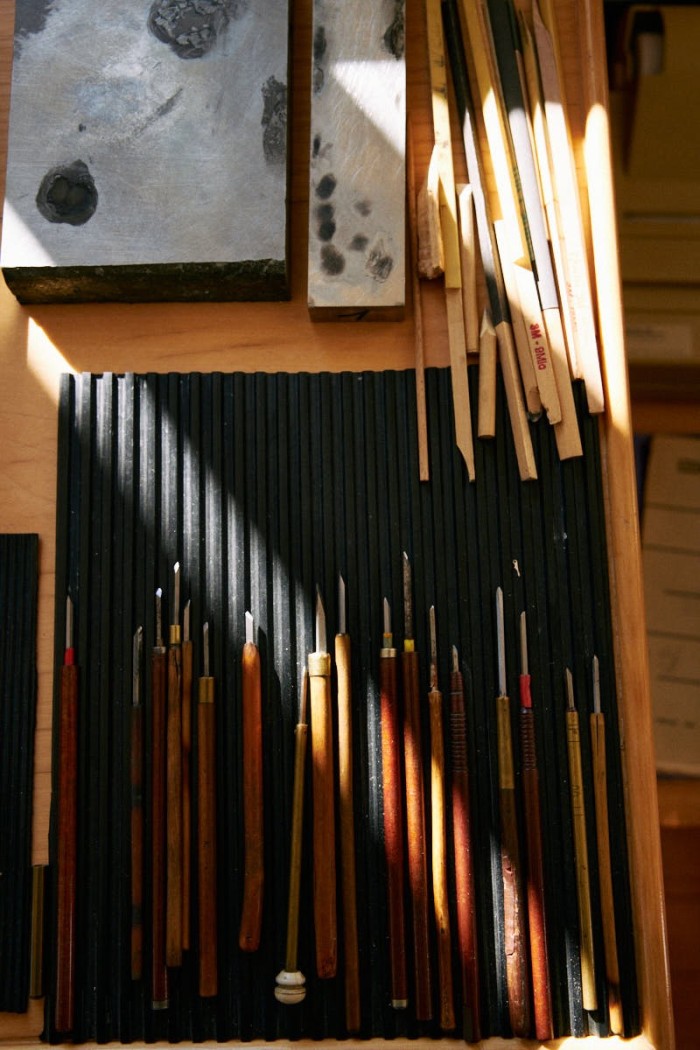
Covid-19 has paused plans to reveal the watch this year at the Louvre in Abu Dhabi. This is probably just as well, as it will give the two men time to decide how to allocate the 20th anniversary series of the Simplicity. The watch sold at auction was a prototype – number 0 of 20, if you like – and its sale set off a tsunami of enquiries that Dufour counts in the tens of thousands. Since then he has been put under pressure by everyone from heads of state down to common-or-garden billionaires; but both men decided their hair was white enough already, so they chose to hold a lottery for the final 10 places on the list. “The first seven will be in platinum with a blue dial. Numbers seven to 14 will be made in white gold with a grey face. And the last seven will be in pink gold.”
The more arithmetically adept among you will have noticed that seven plus seven plus seven comes to 21. But in the world of Dufour and Sfeir, this apparent inconsistency is simply reconciled. “We are going to produce 20,” Claude says firmly, “plus one to keep in the family.”
Comments